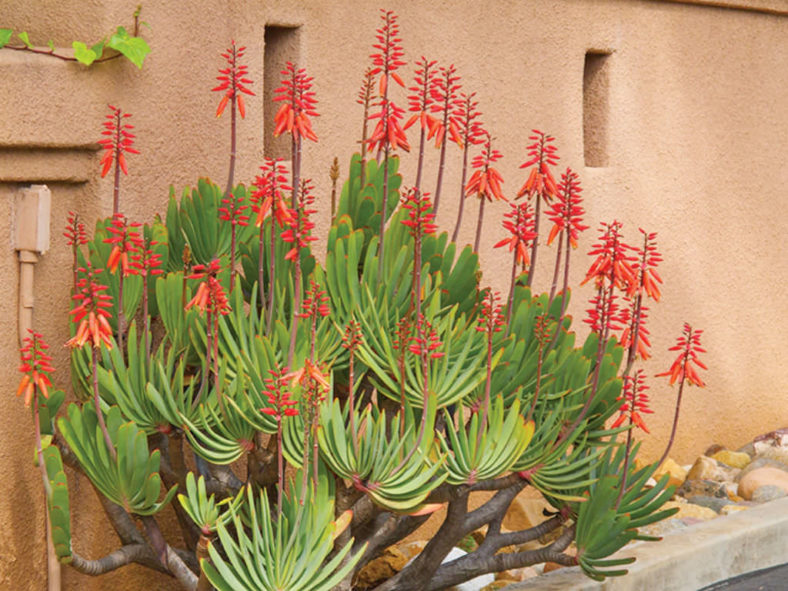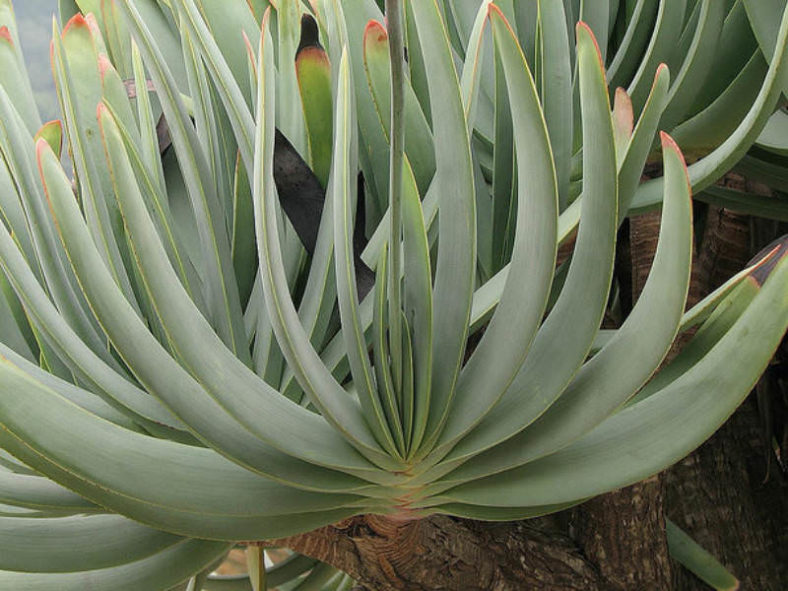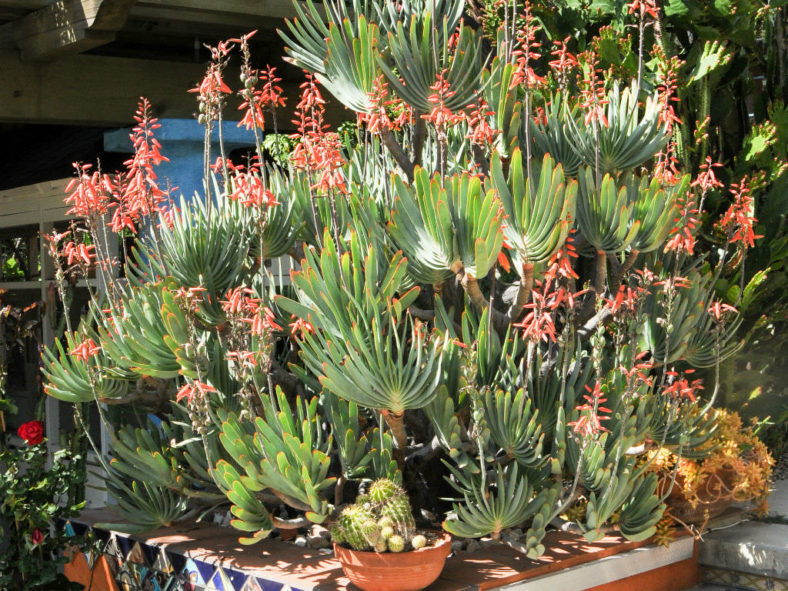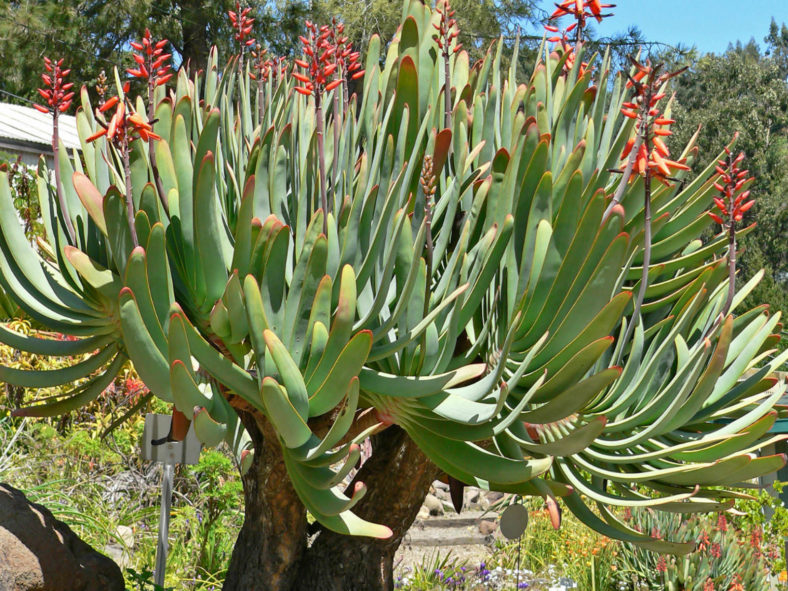Scientific Name
Kumara plicatilis (L.) G.D.Rowley
Common Name(s)
Fan Aloe
Synonym(s)
Aloe disticha var. plicatilis, Aloe flabelliformis, Aloe plicatilis, Aloe tripetala, Kumara disticha, Rhipidodendrum distichum, Rhipidodendrum plicatile
Scientific Classification
Family: Asphodelaceae
Subfamily: Asphodeloideae
Tribe: Aloeae
Genus: Kumara
Etymology
The specific epithet "plicatilis" (pronounced "ply-KAY-til-iss") means "pliable, flexible (that may be folded up)" and refers to the fan-shaped clusters of the leaves of this species. However, this epithet is a misnomer because the leaves are nothing like plicate and do not fold.
Origin
Kumara plicatilis is endemic to a few mountains in the Fynbos ecoregion of the Western Cape province in South Africa.
Description
Kumara plicatilis, formerly known as Aloe plicatilis, is a much-branched succulent shrub or small tree with grey stems forked with clusters of leaves arranged in 2 opposite rows. It can grow up to 16 feet (4.9 m) tall. The leaves are fleshy, grey-green to blue-gray, tongue-shaped, round-tipped, and can measure up to 12 inches (30 cm) long and 1.6 inches (4 cm) wide. The leaf tips often display orange shades.
From winter to spring, an unbranched inflorescence out of each leaf cluster rises and bears an open terminal cluster of orange-red, tubular flowers. The flowers can reach a length of 2 inches (5 cm).

Hardiness
USDA hardiness zones 9b to 11b: from 25°F (-3.9°C) to 50°F (10°C).
How to Grow and Care
Aloe is a very forgiving, well-grown plant that can be quite beautiful. However, as with all succulents, it must never be allowed to sit in stagnant water and should be carefully monitored for signs of overwatering.
These succulents are not particularly fast-growing and will only rarely need repotting. However, in the spring, repot Aloes tipping over their pots or have ceased growing. A well-drained potting mix is essential. Use a cactus or succulent mix. When repotting a larger plant, dividing the root ball carefully is possible. Some varieties of Aloe will send off offsets that can be potted independently.
Aloe plants need intense, bright light. Once acclimated, they can withstand full summer sun. In the winter, provide bright light. These plants prefer warmer temperatures of 70°F to 80°F (21°C to 27°C) but will survive down to 40°F (4.5°C). Feed with a fertilizer for cacti and other succulents in spring and summer only.
Learn more at How to Grow and Care for Aloe.
Links
- Back to genus Kumara
- Succupedia: Browse succulents by Scientific Name, Common Name, Genus, Family, USDA Hardiness Zone, Origin, or cacti by Genus
Photo Gallery
Click on a photo to see a larger version.


